Journaling with Chronic Illness: Tracking Your Life
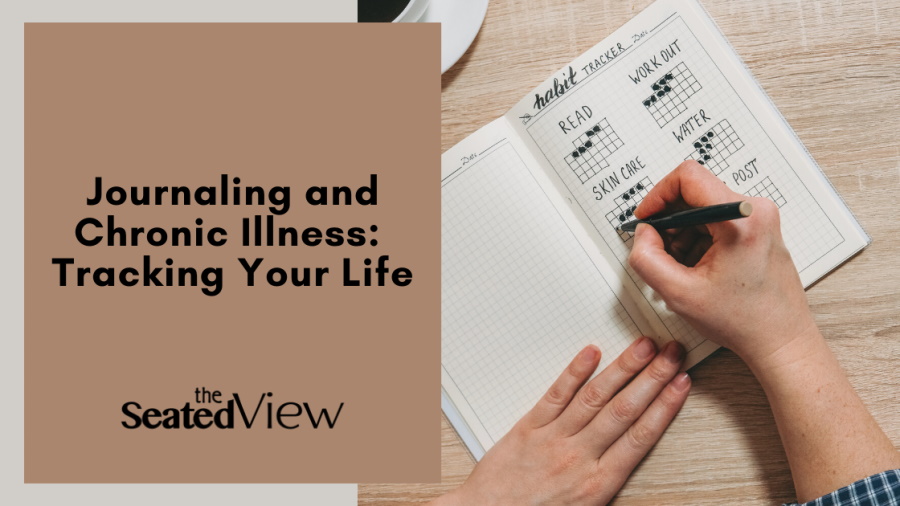 Using a journal when you have a chronic illness can be helpful in many different ways. In the first post of this series, I talked about using expressive writing to process your feelings and thoughts and as a tool to cope. But as any bullet journaler knows, your notebook can also be a fantastic tool to track your life. And that can be really useful with a chronic illness because we have so many extra things to track. In this the third post in the journaling and chronic illness series, I’m taking a look at some of the ways you can use your planner (or journal or notebook) to track your life, chronic illness style.
Using a journal when you have a chronic illness can be helpful in many different ways. In the first post of this series, I talked about using expressive writing to process your feelings and thoughts and as a tool to cope. But as any bullet journaler knows, your notebook can also be a fantastic tool to track your life. And that can be really useful with a chronic illness because we have so many extra things to track. In this the third post in the journaling and chronic illness series, I’m taking a look at some of the ways you can use your planner (or journal or notebook) to track your life, chronic illness style.
Posts in this series:
Part One – How Journaling Can Help You Live Better with Chronic Illness and Pain
Part Two — Journaling with Chronic Illness: My Favourite Supplies
Part Three — Journaling with Chronic Illness: Tracking Your Life
Part Four — Journaling with Chronic Illness: Finding Inspiration for Creativity
![]()
My August 3 Things trackers
Tracking your goals
I’m not super consistent in tracking things, but the one thing that is my every day and that’s my 3 Things system. I developed this almost 3 years ago as a gentle method to build new habits and get things done while respecting my chronic illness. I created tracking sheets to decorate with stickers as of fun way to keep being consistent, but lately I’ve been experimenting with tracking in my journal. Sometimes, it is as simple as an outline of the month with one little square per day that gets coloured in when I do whatever I’m tracking (you can outline it yourself — having a notebook with dots or graph paper helps — or use a stamp). At other times, I incorporate the space for tracking in a drawing or design.
I also have another type of larger personal goals for the month and for that, I use a suggestion I saw in a video by YouTuber Reflect with Raksha. At the beginning of each month, I put three categories on one page and write down what to Do, Learn, and Read. I’m careful to not put more than one or two things in each category – for me, the aim is to have slow and steady progress on attainable goals. Still, certain items have a habit of moving forward to the next month, but such is life.
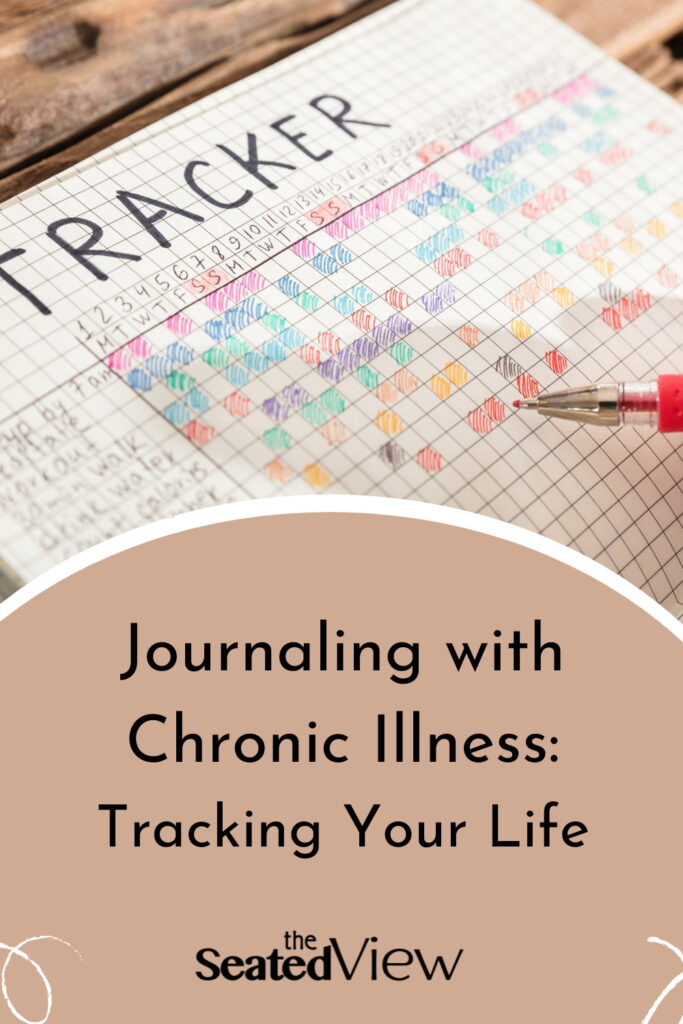
Medical trackers
You may already have an app to track your symptoms – that works for a lot of people. Not so much for me, mostly because the only app I open every day is the New York Times crossword. I enjoy the push-pull between accomplishment and humiliation it brings me. But the single most useful tool in my lifelong effort to learn to pace myself is one I’ve discovered only this year: having a daily record of how I feel physically, how my mood/mental health is, and my fatigue level. I give them a letter grade from A to C and write that in the monthly two-page calendar at the front of my planner. I also use different colours for each — it makes them pop more at a glance. Beginning the day by doing this helps me be aware of how I feel before I start anything. And that helps me readjust my task list, thus giving my body a vote in what I do.
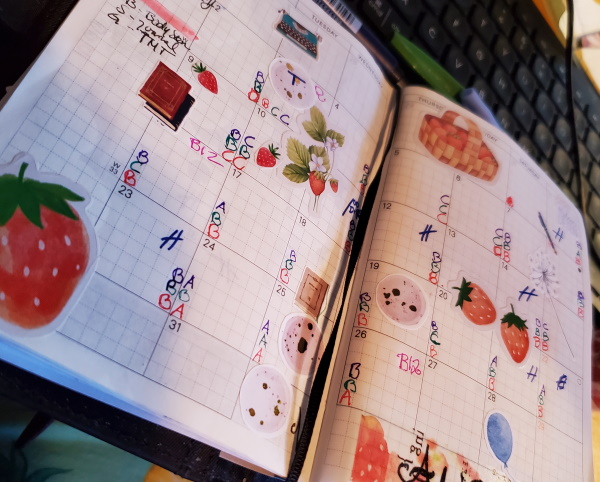
My daily health trackers. Yes, the August theme was strawberries!
At some point within the last 18 months, the past started blurring for me. The continuing pandemic-induced sameness of the days gives my memory nothing upon which to pin a moment, which means routine tasks tend to disappear in the murk. Including when I have picked up my medication. So now I track it. On one of the note pages in the back of my planner I wrote down Date Ordered, Medication Name, and Date Picked Up. You could also add the prescription number or the doctor who prescribed it, if that information is important.
Last in this category, I write down a brief summary of the appointments with my doctors, including topics we discussed and any decisions made. To make these notes obvious, I place a strip of blue washi tape in the margin next to the notes. In my planner, this means it’s a medical item and makes it easier to find.
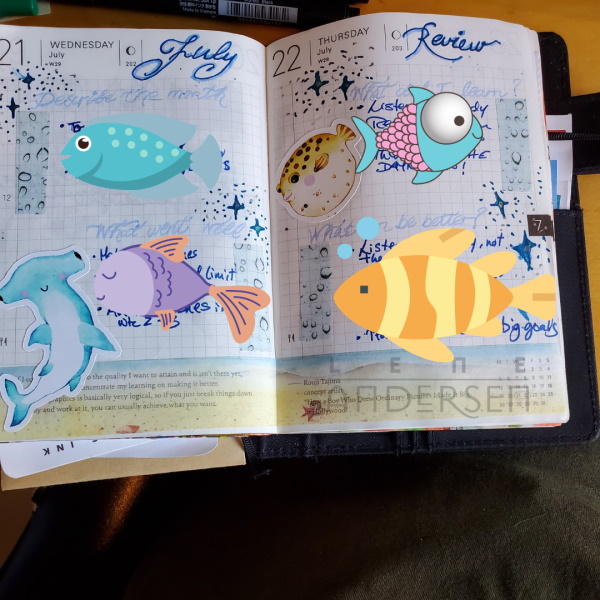
My July monthly review.
Reviews and reflection
As I mentioned in the first post in this series, I used to journal a lot when I was younger as a way to process my feelings. My ability to hand write for longer periods of time has deteriorated over time, but I’m still using my journal for things like reflections and reviews. These days, they are shorter than they used to be, but it still works.
One type of “review” is notes on the books I have read. Again, these entries are marked by a particular washi tape – one with books on it, of course – including the title, author, and some brief thoughts on what I thought of it. Although I also use a spreadsheet to track different stats about my reading (nerd alert), there is something really lovely about sitting down to spend a few minutes with my thoughts about the books and putting them on paper.
Towards the end of each month, I do a two-page review of how the month went (this borrowed from a video by Plant Based Bride. The category headings are:
- Describe the Month — I usually try to come up with a short sentence to summarize. For instance, my August 2021 summary is “heal and reset.” I’ve also done just a few bullet points, so whatever works for you.
- What Went Well — this is a great reminder to pat yourself on the back and celebrate growth, a fun moment, or anything else you want to remember.
- What Did I Learn — this works really well as an end of the month reflection on my 3 Things, patterns I want to change (eg., forgetting to pace myself), how I’m progressing on bigger goals or how I’m feeling physically and emotionally.
- What Can Be Better Next Month — this offers a moment to reflect on things I’d like to do better and sometimes inspires what I choose to do for my 3 Things the following month. I do try to make this category something that’s within my control. That is, rather than writing down for instance, “I want to feel better next month,” I write “talk to my doctors about treatment” or “I control the list, not the other way around.”
I usually don’t get too detailed in these notes, keeping it to three bullet points on each.
These are just some of the options for using a planner or journal to track your life. I’ve been inspired for some of my trackers from watching and reading materials from people in the planning community. Next week, I’ll talk more about inspiration, both in terms of how to use my planner and the creative expression.
What would you like to track in your journal?
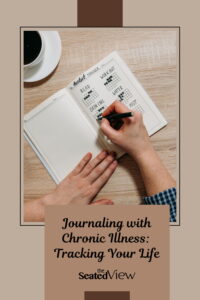
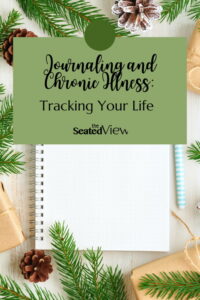
1 Comment
Read More
Discover what else I've been writing about...
















Lene,
I am involved in a three things club. We write every day three good words (they are actually good thoughts, things, actions, ideas, etc.). Each gets to pick their three things. No judgments. Sometimes we write things that anger us, delight us, or even inspire us. They are our things. IN a way, it is journaling. I know what it does every day, is connect us to others. Connections are the best way to journal.
rick